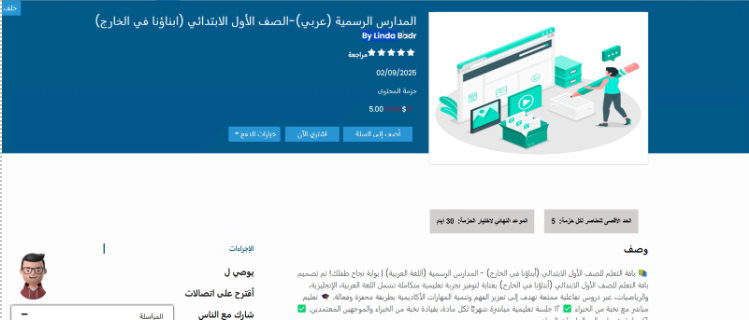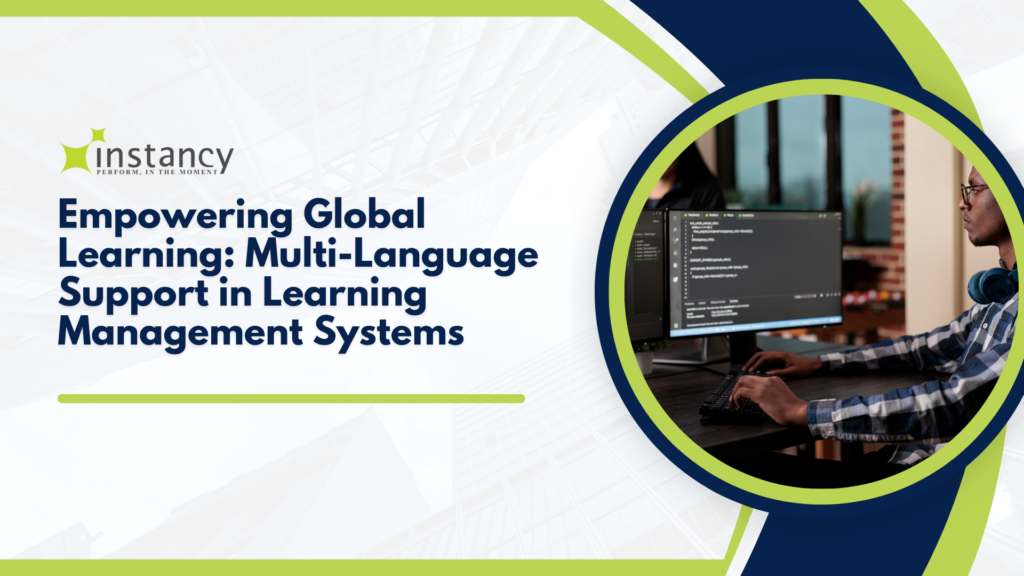Introduction
In an era where enterprises and training institutions operate on a global scale, learning must be accessible to diverse audiences across different languages and cultures. Supporting a worldwide workforce or student base requires a modern Learning Management System (LMS) that goes beyond traditional, single-language platforms.
For multinational organizations, universities, and training providers, an LMS should seamlessly support multiple languages—not only for the interface and navigation but also for the course content itself. Additionally, AI-powered translation technologies are transforming how quickly and efficiently multilingual learning can be delivered.
The Need for Multi-Language Learning Platforms
The workforce today is more globalized than ever. Employees and students across different regions require training that is localized to their language preferences. Traditional approaches—where training is developed in one language and later manually translated—are not only slow but also expensive and difficult to scale.
A multi-language LMS is essential for:
✅ Enterprise training: Large corporations need to train employees across multiple geographies with consistent knowledge while respecting linguistic diversity.
✅ Higher education and professional development: Universities and learning institutions need to provide courses in multiple languages to cater to international students.
✅ Customer education programs: Companies offering product training must ensure that customers can learn in their native language for better comprehension.
✅ Compliance and certification training: Regulations vary by region, and ensuring that employees fully understand compliance requirements is crucial.
Multi-Tenant Learning Sites with Multi-Language Capabilities
For organizations managing multiple learning sites—whether for different departments, subsidiaries, or partner organizations—having a multi-tenant LMS is crucial. Each learning portal should support multiple languages while maintaining a unified structure for easy administration.
A robust multi-language LMS should allow administrators to:
- Design and manage multiple learning sites under one system, each supporting different languages.
- Ensure the user interface (UI) adapts to various languages, including Right-to-Left (RTL) display support for languages like Arabic and Hebrew.
- Automate the translation of menus, buttons, and labels to provide a seamless user experience.
Beyond the Interface: Translating Learning Content at Scale
While providing a multi-language LMS interface is important, it is not enough. The real challenge is translating and localizing eLearning content so learners can understand and retain knowledge effectively.
For example, an organization might have a compliance training course developed in English. To serve employees in France, Japan, and Mexico, that content needs to be available in French, Japanese, and Spanish, including all text, videos, quizzes, and interactive exercises.
A multi-language LMS with built-in AI-powered translation capabilities ensures that:
✅ Courses, quizzes, and assessments are available in the learner’s preferred language.
✅ Videos and voiceovers are automatically translated and synced.
✅ Interactive simulations and activities adjust dynamically to different languages.
By integrating an AI-driven Learning Content Management System (LCMS), organizations can publish content in multiple languages without requiring extensive manual translation efforts.
AI-Powered Language Translation: Breaking Down Barriers
The process of localizing learning materials has traditionally been time-consuming. Organizations often hire human translators, which slows down deployment and increases costs. AI-based translation is revolutionizing this process by enabling instant and scalable content translation.
With Instancy’s AI-powered translation engine, organizations can:
- Dynamically translate LMS interfaces into multiple languages.
- Automatically convert course content (text, quizzes, videos, and transcripts) into various languages while maintaining accuracy and context.
- Generate voiceovers in multiple languages to make learning accessible to non-readers and visually impaired learners.
This automation ensures consistency, speed, and efficiency, allowing faster rollout of multilingual training while reducing costs associated with manual translation.
Empowering Learners with Personalized Language Preferences
In a global learning environment, personalization is key. Not every learner is fluent in the primary language of instruction, and forcing them to learn in a non-native language can hinder comprehension and engagement.
A multi-language LMS should empower learners to:
✅ Switch between languages easily within their learning portal.
✅ Engage with content in their preferred language without administrative intervention.
✅ Receive AI-generated summaries, transcripts, and explanations in their native language.
This flexibility ensures a more inclusive learning experience, allowing learners to focus on acquiring skills rather than struggling with language barriers.
Multi-Modal Learning in Multiple Languages
The modern workforce doesn’t learn in a single format. A multi-language LMS should support various modalities of learning, including:
📚 Self-paced eLearning courses – AI-powered translations ensure all modules are available in multiple languages.
🎤 Video-based learning – AI-generated subtitles and voiceovers adapt to different linguistic needs.
🤝 Instructor-led training (ILT) and virtual classrooms – Facilitators can provide live training in different languages, while AI-generated real-time translations make discussions more accessible.
💡 Conversational AI chatbots – AI-driven agents can answer questions in different languages, acting as virtual tutors.
📊 Gamification and assessments – Quizzes and challenges are presented in the learner’s language, ensuring fair assessment.
Instancy’s AI-Powered LMS: Transforming Multilingual Learning

Instancy offers a comprehensive multi-language learning solution by integrating Learning Management System (LMS) and Learning Content Management System (LCMS) capabilities. Our AI-powered platform enables organizations to:
🚀 Seamlessly translate LMS interfaces and course content into multiple languages.
🎯 Automate video and text translations, reducing the cost and time of manual translations.
📚 Ensure all training materials, quizzes, and assessments are available in the learner’s preferred language.
🤖 Enable conversational AI tutors that assist learners in real-time in multiple languages.
Conclusion: The Future of Global Learning is Multilingual
As organizations expand their global footprint, multi-language support is no longer optional—it is a necessity. By leveraging AI-driven translation technologies, enterprises and training institutions can eliminate language barriers, improve knowledge retention, and ensure inclusivity for all learners.
With Instancy’s AI-powered multilingual learning platform, organizations can deliver learning at scale, personalize content for diverse audiences, and enhance global workforce productivity.
📢 Ready to transform your learning ecosystem?



